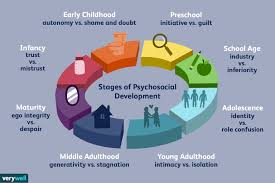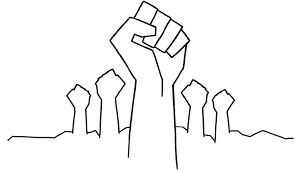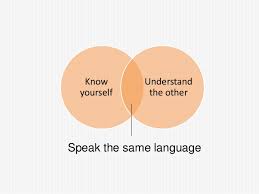
Psychosocial abilities
For the second half of this rather long chapter, our authors begin with a discussion of the difference between adult organized and peer play. Within adult organized sports the actions of the players are regulated. There is a strong emphasis on order. Kids wait to be told what to do by the adults, and spontaneous behavior is equal to “horsing around.” The kids get to make very few decisions and carry out the decisions of adults. The athletes are closely supervised and the kids may stop playing if the coach is not around. In peer play games, the players rely on informal rules to regulate the game. Kids make consensual decisions and there are few rules. Instead of focusing on winning, the kids’ focus is on action, personal involvement, keeping the game close, and reaffirming friendships. The peer games are often voluntary, flexible, and based in consensus. What youth sports or activities best fit within these descriptions? Are there adult sports that act as peer play? (Hint: The adult activities that I can think of are often strongly associated with California.)
Moreover, when looking at youth sports, we are often told that youth sports build character, but is this true? This is tough to say, however, researchers have attempted to measure sports affect on “life skills.” Life skills are conceptualized as psycho-social abilities that enable individuals to deal effectively deal with the demand and challenges of everyday life. Specifically, researchers have examined how sport participation may assist kids develop responsibility, self-confidence, leadership skills, self-esteem, and the ability to make decisions. Alternatively, researchers have examined youth sports to see if they may hamper the child’s social development. Sadly, we do not have many conclusive studies, because many of the studies do not test for causation, but correlation. We may find that young athletes are more likely to have x characteristic, but it is difficult to know if that characteristic played a role in pushing the kids to join a sport, in tandem with sport participation, or if that characteristic developed during sport participation. (Note: I recently set up a study to see if an after school program actually improved self-esteem, self-efficacy, and so on, but the after school program backed out of the study due to the intensive work that was needed to actually test for causation.)
While causation for life-skills is difficult and there aren’t as many studies done as we would like, researchers have found evidence to support the notion that developing sport competencies and skills positively influences a child’s self evaluation and their social esteem among their peers. Research has consistently shown that young sports participants score higher on a variety of test that measure mental health. Moreover, we can think of our own experiences in high school. Often for boys the most “popular” guys on campus are athletes. Interestingly, this doesn’t carry over to university, even at the big sport schools (we will read more about this when we read the Adlers’ book Blackboards and Backboards).
Despite the benefits of organized youth sports, young athletes face many issues during their participation as well. First, adult intrusions into the sports can be a problem. This is most obvious when it comes to adult violence at games or practices. Second, some parents and coaches may be living out their own sport dreams through the young athletes. Adults may see the youth’s accomplishment as their own, which may encourage the parents to place pressure on the kids to perform. Moreover, while kids used to switch sports with the seasons, today, we see more kids being pushed to specialize within a single sport. College coaches are recruiting from middle-schools, which may put tremendous pressure on our young athletes. Traveling teams or club teams may place a great deal of pressure young athletes (and financial pressure on families). Traveling teams are attractive because the traveling teams often offer better coaching, players play on well-kept facilities, there is year-round training, and there are opportunities for elite competition. However, within this world there is often little regard for anything but winning. Within these leagues, the youth often must abandon other sports, and travel with their team year round. Family lives must be re-centered around youth sports and some families relocate or send their children off to sport academies. Interestingly, my university is not far from Cooperstown. It is amazing how many families come out here for youth baseball games during the summer. It is an amazing part of our summer economy and raises housing costs in an area of the US that would otherwise be affordable.
Youth may also have their education disrupted in favor of their sport. When young athletes must practice for eight hours a day or travel on a regular basis it may interfere with their ability to go to school. Some families turn to tutors or sports academies. However, in my research on skateboarders, I saw many of the young (working class) skaters simply drop out of school in order to pursue a career in skateboarding. Athletic careers do not last forever and many will never make it big, so the lack of an education may hinder life chances as the athlete ages. Injury is another significant risk in youth sports. Heavy participation and overtraining result in a greater likelihood of being injured. As our book points out, some doctors are seeing younger athletes come in for serious surgeries. In addition, in some youth sport worlds, wining is everything. The young athletes’ win-lose records may define them. Adults and one’s peers may shower winners with prestige and honor, while the losers suffer disdain and ridicule ( back when the Simpsons were funny there was an episode where Bart and Lisa play hockey that perfectly describes this situation https://youtu.be/3SS_q5NbK5o?t=1m5s ).
The question is how do encourage young people to be active, but avoid overburdening them with pressure? As many of you mentioned on Tuesday, childhood has changed for contemporary youth. Kids are spending a great deal of time indoors, watching TV, playing video games, and clicking around on the Internet. The indoor childhood has become more common in the past 10 years. There have been declines in spontaneous outdoor activities such as bike riding, swimming, and touch football. Due to the indoor docile lifestyle of contemporary youth, we see childhood obesity increasing. How do we combat this? How do we encourage sport for young people while not placing too much pressure on them and assist them in avoiding unnecessary injuries? How do we combat a growing number of hyper involved parents, sport academies, and other organizations that profit from the current system? How do we retain the best aspects of youth sport and avoid the worst?
PART 1
QUESTION :
For the second half of the chapter, I want you all simply to respond to the chapter and maybe answer some of the questions above. There are portions of the chapter that I didn’t cover in this “intro,” such as a Bill of Rights for Young Athletes, Sports Academies (I mentioned them but I didn’t go into detail), Youth Olympic Games, etc., you should consider commenting on these sections.
PART 2
REPLY BACK TO FOLLOWING POST:
“I believe one of the most important steps to encourage kids to be more active is to let them try a variety of sports and outdoor activities. That way they can choose which activities they enjoy most. It also provides children the satisfaction of making their own choices and not feel like they are being forced to do something that they don’t enjoy. When it comes to the indoor childhood, it should be the parent’s obligation to monitor the time that is spent indoors and on electronic devices. In my home my son is only allowed a minimal amount of time on electric devices. On the weekends he must go play outside. At first it was a struggle, he would say that outside was boring but we told him that he had to spend at least an hour outside. Now we can’t get him to come in the house. When it comes to trying to keep the best aspects of youth sport and avoid the worst, that is a very tough subject to tackle. I currently have a 10 year old son, and the pressure that come with playing sport now is pretty tough. As a parent I always want him to do his best, especially when playing on a club team. When it comes to parents they need to make sure to have open communication. My son took an entire year off from sports, as hard as it was at the time it was something that we decided as a family. The child needs to feel like the parent is making the best decisions for their happiness and allow the child to provide input.”
We can write this or a similar paper for you! Simply fill the order form!












